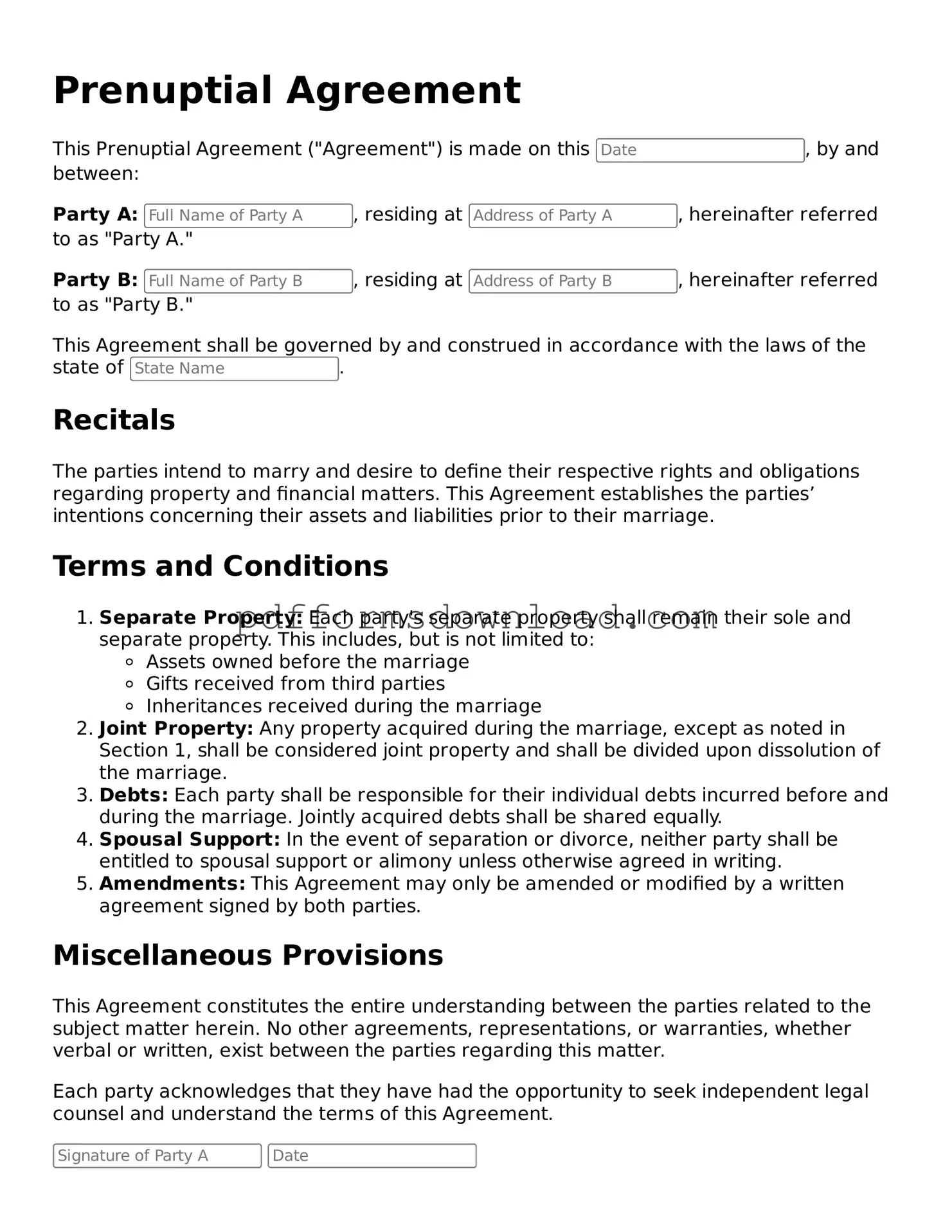What is a prenuptial agreement?
A prenuptial agreement, often called a prenup, is a legal contract made by two people before they get married. It typically outlines how assets and debts will be divided in the event of a divorce or separation. This agreement can also address issues like spousal support and property rights, providing clarity and protection for both parties.
Who should consider a prenuptial agreement?
Anyone entering a marriage may benefit from a prenuptial agreement. This is especially true for individuals with significant assets, debts, or children from previous relationships. A prenup can help protect personal property and ensure that both partners have a clear understanding of financial responsibilities.
What can be included in a prenuptial agreement?
Many topics can be addressed in a prenup. Common inclusions are the division of property, management of debts, and spousal support. Couples can also specify how future earnings will be treated. However, certain topics, like child custody and child support, are generally not enforceable in a prenup and are usually determined by the court based on the best interests of the child.
Is a prenuptial agreement legally binding?
Yes, a prenuptial agreement can be legally binding if it meets certain requirements. Both parties must enter into the agreement voluntarily and with full disclosure of their financial situations. It should also be fair and reasonable at the time of signing. Courts may not enforce a prenup if it is deemed unconscionable or if one party did not have proper legal representation.
How do I create a prenuptial agreement?
Creating a prenuptial agreement typically involves several steps. First, both parties should discuss their financial situations and what they want to include in the agreement. Next, it is advisable to consult with separate attorneys who can provide legal guidance and ensure that both parties’ interests are protected. Finally, the agreement should be drafted, reviewed, and signed by both parties, ideally well in advance of the wedding.
Can a prenuptial agreement be changed after marriage?
Yes, a prenuptial agreement can be modified after marriage. Couples can create a postnuptial agreement, which serves a similar purpose but is executed after the marriage has taken place. Both parties must agree to the changes, and it is recommended to have the modifications documented and signed by both parties to ensure legal validity.
What happens if we don’t have a prenuptial agreement?
If a couple does not have a prenuptial agreement, state laws will govern the division of assets and debts in the event of a divorce. This can lead to outcomes that may not align with either party's wishes. Without a prenup, issues like property division and spousal support may become contentious and require court intervention, which can be time-consuming and costly.
